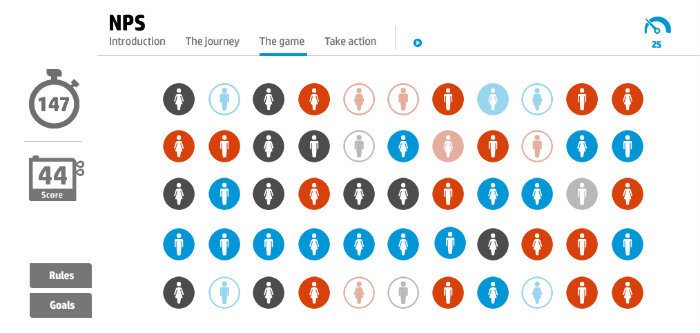Taking Advantage Of Gamification
As exciting (or aggravating) as that pass was, it might surprise a lot of football fans that throws were against the rules in the early days of the sport. Players couldn't carry or throw the ball, instead limiting themselves to kicking or batting it only. Then the country’s innovation boom exploded. People started looking into the sky, obsessed with flight, new technology and exciting inventions. This innovation mania set the stage for what would become a new national obsession—football—after a rule change in 1906 made the game more exciting with forward passes.
If we take a page from football’s playbook, as we use training technology to innovate and make better training, we should also think about what is exciting, motivational and stronger learning. That’s where gamification comes in. It’s been one of the hot topics of the eLearning world for a couple years, and it’s easy to see why, especially in America. In a recent worldwide survey, Americans were the mostly likely to say they were risk-takers and liked competition, much more so than respondents in Europe and Asia.
Because we’re drawn to competition, training that incorporates gamification or gamified elements like badges, progress bars, achievement awards and leaderboards are tied directly into the part of our brain that craves a little rivalry. By catering to what your learners want, you increase their motivation and engagement, and you have the added benefit of keeping their attention in an increasingly busy, information-rich world. In most corporate training programs, users don’t get real-time feedback, but with gamification you can give learners instant gratification with scores or other systems that update as they play. Showing learners their progress spurs them to work harder to beat their own personal best, and to be the best as compared to coworkers or other participants.
It’s not just the training world that’s taking advantage of gamification. Marketers are also seeing the benefits of playing into inherent human behaviors. Gamification is now being used to engage consumers on social media, encourage product reviews and boost online comments. And the results are powerful. In one Gigya study, gamification increased engagement by about 30% and boosted content discovery by 68%, among a billion users.
After almost 35 years in the training industry, Allen Communication has seen every evolution of training technology and when and where it’s best to use a specific technique. Allen’s clients have seen similar high rates engagement from gamification and eLearning in training. One Fortune 100 client recently launched a new brand training course to a worldwide, voluntary audience of 300,000. The course far surpassed previous targets with more than 230,000 voluntary completions—19 times higher than any other courses targeted to this audience. Having an engaging, gamified solution that learners wanted to take had long-term implications too, as many users began to shift their opinion of training, now seeing it as valuable, relevant and fun rather than boring or time-consuming.
Because of the users being now more open to training, Allen used a custom portal to make additional targeted content suggestions, similar to how Amazon.com suggests new products. This increased awareness of other courses, and built a feeling of ownership among users because they chose their learning pathways. One of the gamified elements built into the custom portal was a “Brand Impact” score displayed as a gauge on the portal home screen and throughout training courses. Each time users completed a course or activity, their Brand Impact score increased. Having a visual reminder of the value of training encouraged brand engagement and ownership over how their behaviors impact the company as a whole.
By making the courses voluntary, learners viewed the training as a discovery process. The gamification support helped them stay engaged and interested. Creating employee engagement is a critical business objective, adding value to any business model. Best Buy, for example, estimates that every 0.1% increase in engagement translates to an additional $100,000 in operating income at any given store.
Technology and human nature are a give and take. As technology advances, human behaviors change—motivations and interests shift. eLearning, and gamification specifically, allow us the flexibility to meet learner needs and address their motivations by designing engaging, inspiring solutions.


